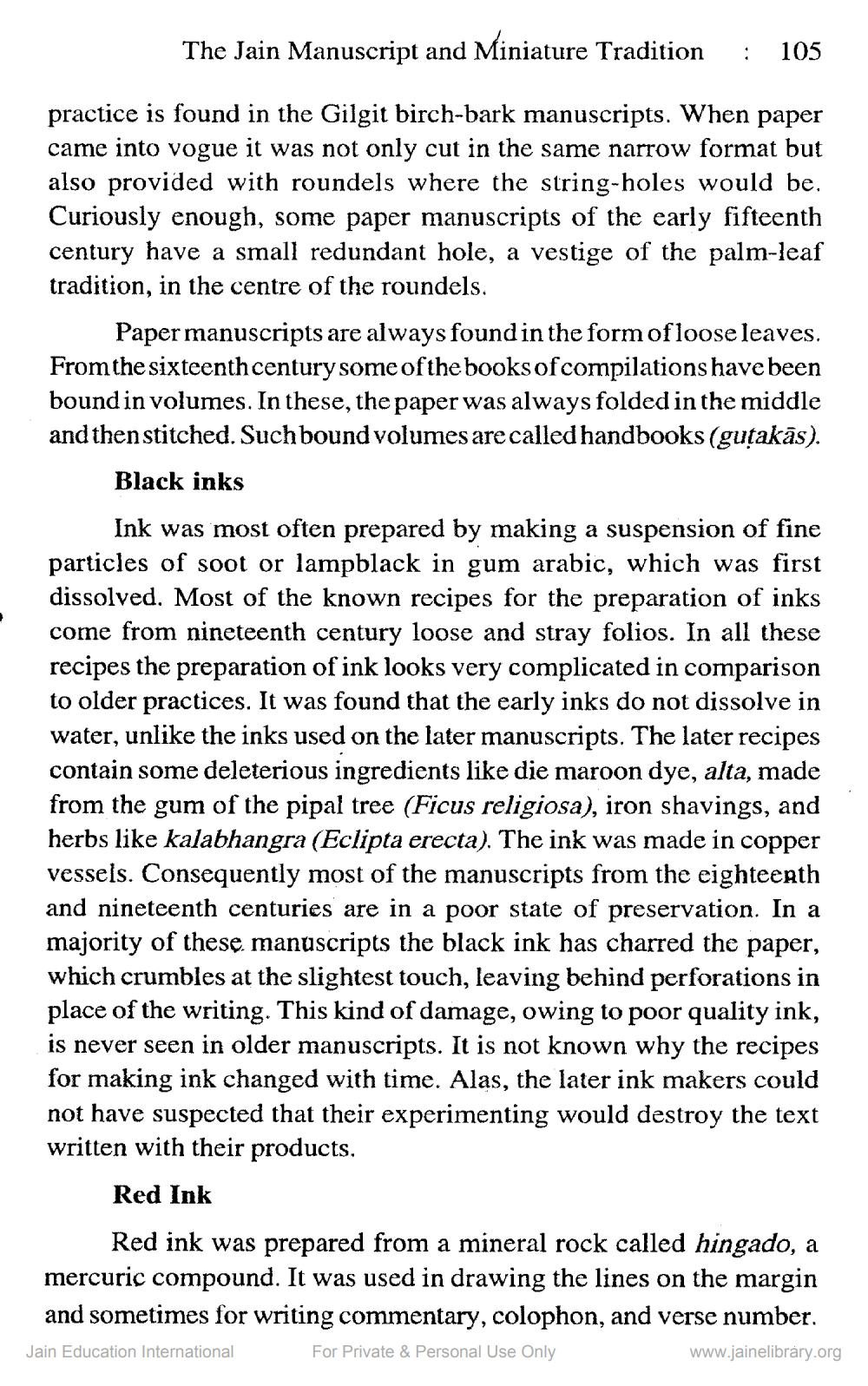________________
The Jain Manuscript and Miniature Tradition 40 105
practice is found in the Gilgit birch-bark manuscripts. When paper came into vogue it was not only cut in the same narrow format but also provided with roundels where the string-holes would be. Curiously enough, some paper manuscripts of the early fifteenth century have a small redundant hole, a vestige of the palm-leaf tradition, in the centre of the roundels.
Paper manuscripts are always found in the form of loose leaves. From the sixteenth century some of the books of compilations have been bound in volumes. In these, the paper was always folded in the middle and then stitched. Such bound volumes are called handbooks (guṭakās).
Black inks
Ink was most often prepared by making a suspension of fine particles of soot or lampblack in gum arabic, which was first dissolved. Most of the known recipes for the preparation of inks come from nineteenth century loose and stray folios. In all these recipes the preparation of ink looks very complicated in comparison to older practices. It was found that the early inks do not dissolve in water, unlike the inks used on the later manuscripts. The later recipes contain some deleterious ingredients like die maroon dye, alta, made from the gum of the pipal tree (Ficus religiosa), iron shavings, and herbs like kalabhangra (Eclipta erecta). The ink was made in copper vessels. Consequently most of the manuscripts from the eighteenth and nineteenth centuries are in a poor state of preservation. In a majority of these manuscripts the black ink has charred the paper, which crumbles at the slightest touch, leaving behind perforations in place of the writing. This kind of damage, owing to poor quality ink, is never seen in older manuscripts. It is not known why the recipes for making ink changed with time. Alas, the later ink makers could not have suspected that their experimenting would destroy the text written with their products.
Red Ink
Red ink was prepared from a mineral rock called hingado, a mercuric compound. It was used in drawing the lines on the margin and sometimes for writing commentary, colophon, and verse number.
Jain Education International
For Private & Personal Use Only
www.jainelibrary.org




